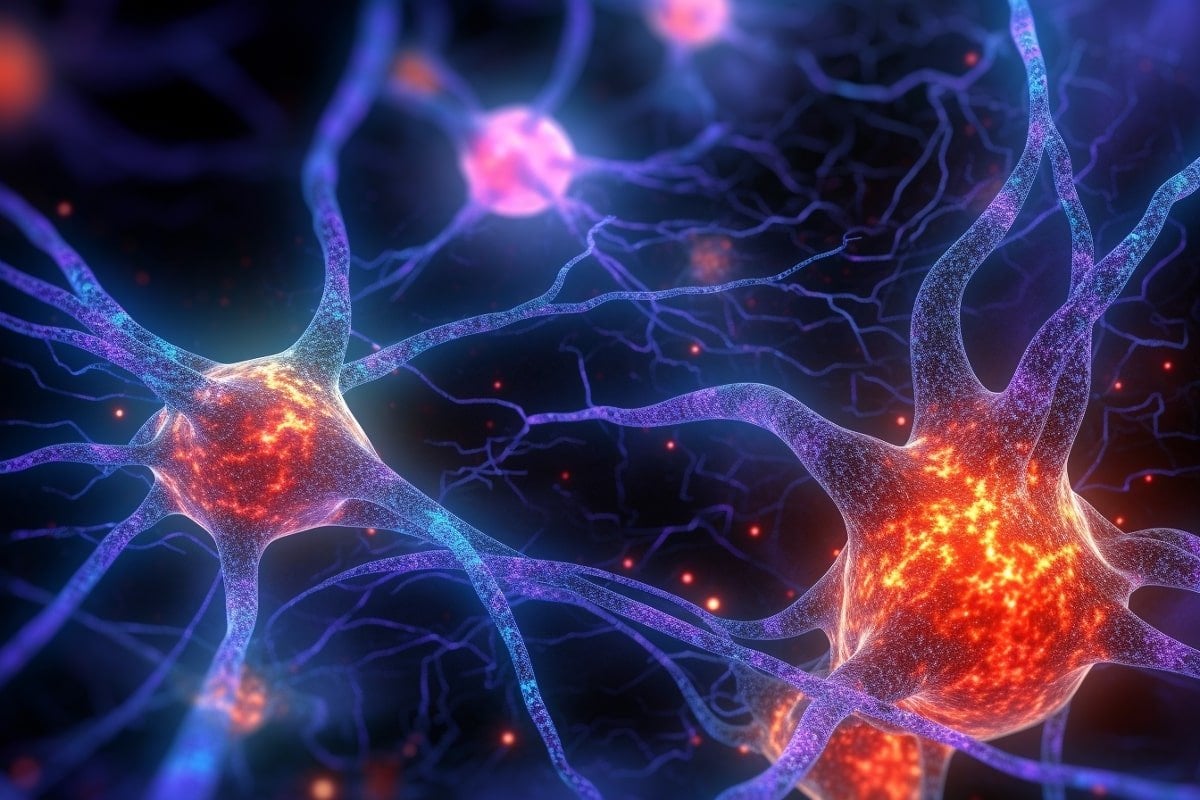Summary: Researchers reveal a previously unknown role of the 19S regulatory particle, part of the cellular proteasome machinery, at the synapses in the brain. These particles were found to be independently regulating synaptic proteins without the presence of their usual partner, the 20S catalytic particle.
This independent function of 19S, described as “moonlighting”, could help synapses adapt to various conditions.
The findings may provide fresh insights into the treatment and diagnosis of neurological disorders such as dementia and Parkinson’s disease.
Key Facts:
- The 19S regulatory particle, traditionally linked to protein degradation within the proteasome complex, was found to have an independent role in synapses.
- Using super-resolution imaging technique, DNA PAINT, researchers discovered an abundance of free 19S particles interacting with synaptic proteins, suggesting a novel regulatory mechanism.
- This discovery may provide new targets for understanding and treating neurological diseases with dysfunctional synapses like dementia and Parkinson’s disease.
Source: Aarhus University
Scientists have long known that the cells’ “protein destruction machine,” the proteasome, plays a crucial role in protein clearance within the brain.
However, a new study published in Science has revealed that its essential component, the 19S regulatory particle, has an independent “moonlighting” role at synapses, and thus might offer new opportunities in the diagnosis and treatment of a range of neurological disorders.
Darwin’s theory of evolution highlighted the importance of adaption and diversity in the natural world. Inside a biological cell, can proteins also perform new functions in new contexts?

The answer seems to be yes for the brain’s primary protein-degradation machine, especially when it is placed at synapses, revealing a hitherto unknown mechanism that allows synapses to change in response to different circumstances.
The role of the regulatory (19S) proteasome particle has always been exclusively linked to its functioning in the proteasome complex, where it collaborates with the catalytic (20S) particle to recognize and remove unwanted or damaged proteins—a mechanism that is crucial for normal brain development and function.
Using a super-resolution imaging technique, called DNA PAINT, the research team noticed an abundance of free 19S particles in synapses, floating around without their 20S partners.
“What we realized was that 19S is not only a partner of 20S. It also works alone as an independent regulator for many key synaptic proteins. This revealed a whole new dimension to our understanding of protein function at synapses,” explains Chao Sun, Associate Professor, and lead author of the article.
The researchers found that the abundant free 19S particles seem to interact with a number of synaptic proteins, including those involved in neurotransmitter release and detection, thus regulating information transfer and storage at synapses.
“Usually, if the cell makes excess copies of one protein component, it needs to get rid of these excess copies. Because cells do not like to have extra proteins lying around when they can’t find partners to enable protein function.
“We call them ‘orphan proteins.’ But in this case, it seems like the synapses are making use of these free 19S particles and adapting them to fulfill alternative functions in the synapses,” Chao Sun explains.
With this new discovery, scientist now has a new target for both understanding and treating neurological diseases with dysfunctional synapses, such as Parkinson’s disease and dementia.
About this neuroscience research news
Author: Chao Sun
Source: Aarhus University
Contact: Chao Sun – Aarhus University
Image: The image is credited to Neuroscience News
Original Research: Closed access.
“An abundance of free regulatory (19S) proteasome particles regulates neuronal synapses” by Chao Sun et al. Science
Abstract
An abundance of free regulatory (19S) proteasome particles regulates neuronal synapses
The proteasome, the major protein-degradation machine in cells, regulates neuronal synapses and long-term information storage.
Here, using super-resolution microscopy, we found that the two essential subcomplexes of the proteasome, the regulatory (19S) and catalytic (20S) particles, are differentially distributed within individual rat cortical neurons.
We discovered an unexpected abundance of free 19S particles near synapses. The free neuronal 19S particles bind and deubiquitylate lysine 63–ubiquitin (Lys63-ub), a non–proteasome-targeting ubiquitin linkage.
Pull-down assays revealed a significant overrepresentation of synaptic molecules as Lys63-ub interactors. Inhibition of the 19S deubiquitylase activity significantly altered excitatory synaptic transmission and reduced the synaptic availability of AMPA receptors at multiple trafficking points in a proteasome-independent manner.
Together, these results reveal a moonlighting function of the regulatory proteasomal subcomplex near synapses.







